1. Benecke M. Six forensic entomology cases: description and commentary. J Forensic Sci. 1998. 43:797–805.
2. Sukontason KL, Ngern-Klun R, Sripakdee D, Sukontason K. Identifying fly puparia by clearing technique: application to forensic entomology. Parasitol Res. 2007. 101:1407–1416.
3. Mendonca PM, dos Santos-Mallet JR, de Mello RP, Gomes L, de Carvalho Queiroz MM. Identification of fly eggs using scanning electron microscopy for forensic investigations. Micron. 2008. 39:802–807.
4. Sperling FA, Anderson GS, Hickey DA. DNA-based approach to the identification of insect species used for postmortem interval estimation. J Forensic Sci. 1994. 39:418–427.
5. Wells JD, Sperling FA. A DNA-based approach to the identification of insect species used for postmortem interval estimation and partial sequencing of the cytochrome oxydase b subunit gene I: a tool for the identification of European species of blow flies for postmortem interval estimation. J Forensic Sci. 2000. 45:1358–1359.
6. Harvey ML, Dadour IR, Gaudieri S. Mitochondrial DNA cytochrome oxidase I gene: potential for distinction between immature stages of some forensically important fly species (Diptera) in western Australia. Forensic Sci Int. 2003. 131:134–139.
7. Chen WY, Hung TH, Shiao SF. Molecular identification of forensically important blow fly species (Diptera: Calliphoridae) in Taiwan. J Med Entomol. 2004. 41:47–57.
8. Park SH, Zhang Y, Piao H, et al. Sequences of the cytochrome C oxidase subunit I (COI) gene are suitable for species identification of Korean Calliphorinae flies of forensic importance (Diptera: Calliphoridae). J Forensic Sci. 2009. 54:1131–1134.
9. Harvey ML, Gaudieri S, Villet MH, Dadour IR. A global study of forensically significant calliphorids: implications for identification. Forensic Sci Int. 2008. 177:66–76.
10. Maddison WP, Knowles LL. Inferring phylogeny despite incomplete lineage sorting. Syst Biol. 2006. 55:21–30.
11. Song Z, Wang X, Liang G. Species identification of some common necrophagous flies in Guangdong province, southern China based on the rDNA internal transcribed spacer 2 (ITS2). Forensic Sci Int. 2008. 175:17–22.
12. Nelson LA, Wallman JF, Dowton M. Identification of forensically important Chrysomya (Diptera: Calliphoridae) species using the second ribosomal internal transcribed spacer (ITS2). Forensic Sci Int. 2008. 177:238–247.
13. Akam M. Hox and HOM: homologous gene clusters in insects and vertebrates. Cell. 1989. 57:347–349.
14. Dhawan S, Gopinathan KP. Phylogeny of the insect homeobox gene (hox) cluster. Genomics Proteomics Bioinformatics. 2005. 3:42–46.
15. Lamka ML, Boulet AM, Sakonju S. Ectopic expression of UBX and ABD-B proteins during Drosophila embryogenesis: competition, not a functional hierarchy, explains phenotypic suppression. Development. 1992. 116:841–854.
16. Tamura K, Dudley J, Nei M, Kumar S. MEGA4: Molecular Evolutionary Genetics Analysis (MEGA) software version 4.0. Mol Biol Evol. 2007. 24:1596–1599.
17. Kalendar R, Lee D, Schulman AH. FastPCR Software for PCR Primer and Probe Design and Repeat Search. Genes, Genomes and Genomics. 2009. 3:1–14.
18. Guarnera EA, Mariluis JC. Human case of disseminated cutaneous myiasis due to Phaenicia sericata. Bol Chil Parasitol. 1986. 41:79–82.
19. Debry RW, Timm AE, Dahlem GA, Stamper T. mtDNA-based identification of Lucilia cuprina (Wiedemann) and Lucilia sericata (Meigen) (Diptera: Calliphoridae) in the continental United States. Forensic Sci Int. 2010. 202:102–109.
20. Vanin S, Tasinato P, Ducolin G, et al. Use of Lucilia species for forensic investigations in Southern Europe. Forensic Sci Int. 2008. 177:37–41.
21. Wells JD, Wall R, Stevens JR. Phylogenetic analysis of forensically important Lucilia flies based on cytochrome oxidase I sequence: a cautionary tale for forensic species determination. Int J Legal Med. 2007. 121:229–233.
22. Stevens J, Wall R. Species, sub-species and hybrid populations of the blowflies Lucilia cuprina and Lucilia sericata (Diptera:Calliphoridae). Proc Biol Sci. 1996. 263:1335–1341.
23. Kethidi DR, Roden DB, Ladd TR, Krell PJ, Retnakaran A, Feng Q. Development of SCAR markers for the DNAbased detection of the Asian long-horned beetle, Anoplophora glabripennis (Motschulsky). Arch Insect Biochem Physiol. 2003. 52:193–204.
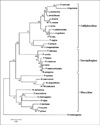

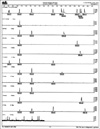
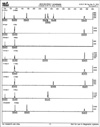






 PDF
PDF ePub
ePub Citation
Citation Print
Print


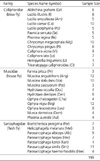
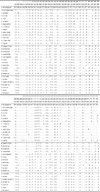
 XML Download
XML Download